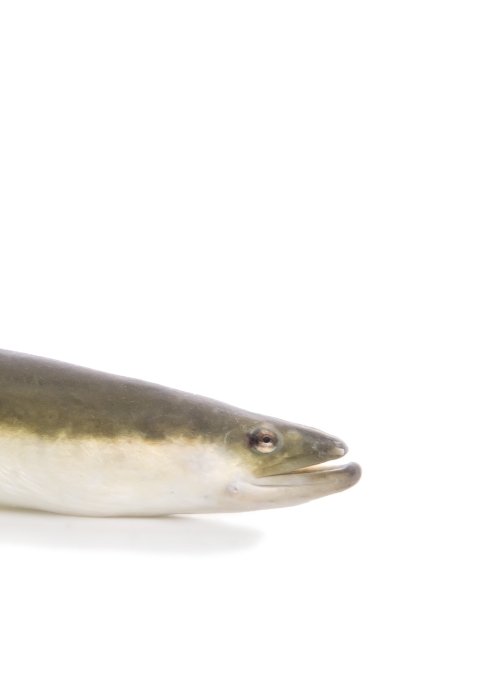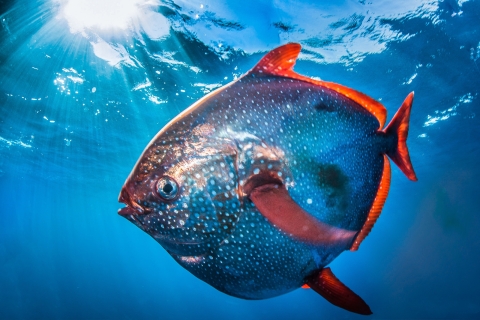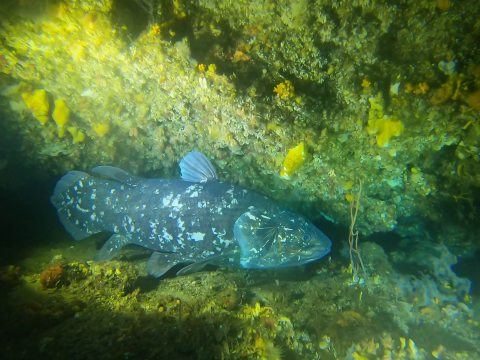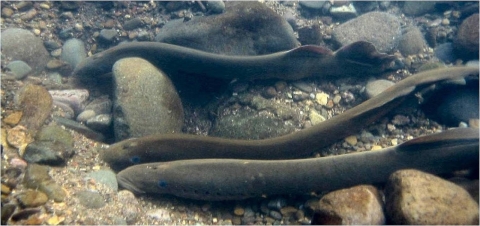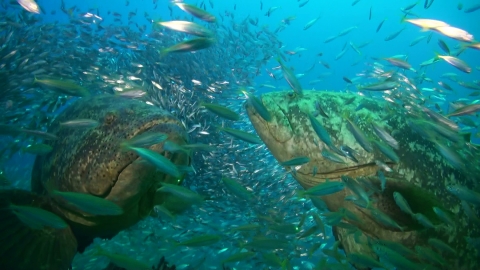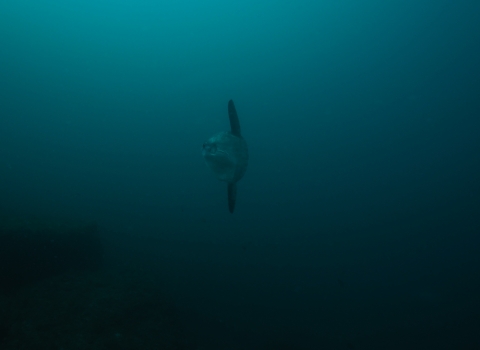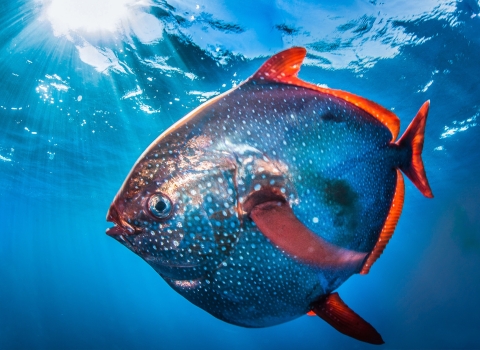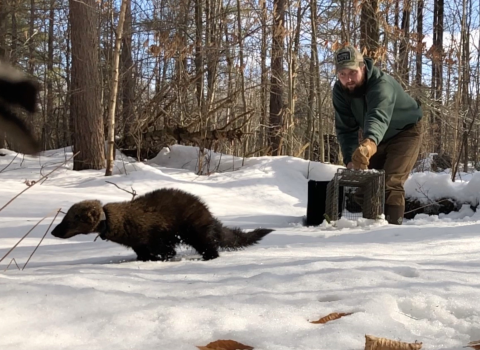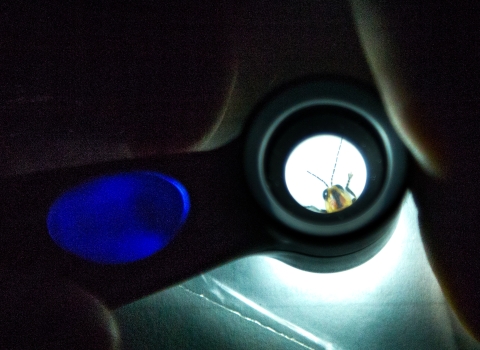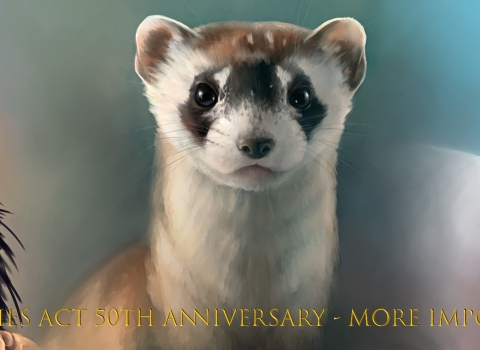A fish is a fish, right?
If you’re reading this article, I’m willing to bet that you’ve got at least a passing interest in fish. Lucky guess, right? Chances are you might know quite a bit about fish, whether your research on the subject comes primarily from Google, time with a fishing rod in hand, or years at an accredited institution. But here’s a question that stumped even the most hardcore fish enthusiasts for centuries: what, in exact terms, is a fish? What definition can we use for our finned friends that encompasses them, and ONLY them? As it turns out, we’re going to have to dive into the science of evolution to figure out why that seemingly simple question is so complex. Then, we’ll look at a few examples of convergent evolution in fishes—ways in which environmental pressures and needs have led fish with virtually no relation to evolve in remarkably similar ways!
What’s in a Name?
Before we get into why a scientific definition of “fish” is so tricky, it’s important to get into just how many different animals that definition needs to cover. Over 40 percent of ALL known vertebrate species in the world are fishes, with about 30,000 species in both freshwater and marine environments combined. From the quarter-inch cyprinid to the 52-ft whale shark, or from the worm-like body of an eel to the massive disc-shaped form of the molas, any definition encompassing all fishes was always going to be necessarily broad. That said: it’s actually fairly simple to make a definition that covers the vast majority of fishes in terms of both phylogeny (concerning evolutionary lineages) and physiology (concerning shared physical traits). So, here’s the rule of thumb: most fish are cold-blooded aquatic vertebrates with paired sets of fins, breathe primarily with gills rather than lungs, lay eggs, and have scale-covered skin that protects their bodies. That definition covers about 96 percent of extant fish species—not bad! But bear in mind that the missing four percent means that we’ve got about 1,200 exceptions to that rule on our hands, which simply won’t do.
Hagfish lack vertebrae, plenty of sharks give live birth, lungfish can primarily breathe air, moray eels don’t have any paired fins, and opah are fully warm-blooded, to name a few! So: what definition would cover all fishes?
Well, all fishes have an obvious head region with eyes, teeth, and other sensory organs, as well as a brain contained in some kind of casing. You might well be noticing an issue here: those same definitions apply to quite a lot more animals that we’d never consider to be fishes! Mammals, reptiles, birds, and amphibians also fit perfectly well within those same constraints, making the definition meaningless when it comes to distinguishing a fish from a non-fish. To get into why that is, let’s go over an often-used term in phylogenetics, the study of evolutionary relationships and lineages: “clade”. A clade is a group of species that encompasses a single common ancestor, as well as all descendants of that ancestor. The vast majority of fishes today are ray-finned fishes, with paired fins that have bony “rays” supporting their structure structure
Something temporarily or permanently constructed, built, or placed; and constructed of natural or manufactured parts including, but not limited to, a building, shed, cabin, porch, bridge, walkway, stair steps, sign, landing, platform, dock, rack, fence, telecommunication device, antennae, fish cleaning table, satellite dish/mount, or well head.
Learn more about structure (picture of fin rays here). They belong to the clade Actinopterygii, which first emerged about 400 million years ago.
However, that clade doesn’t include all the fishes we know today. To encompass the cartilaginous fishes like sharks and rays, the jawless fishes like lampreys and hagfish, and most crucially the lobe-finned fishes like lungfish and coelacanths, we need to stretch the clade back a bit further to include the most ancient vertebrates. That clade contains those original jawless fish, the bony ray-finned fish, and the cartilaginous fishes without anything else we’d consider a non-fish—great so far! But then we get to the lobe-finned fishes, so named for the fleshy lobed fins that resemble a set of four limbs more than the paired fins of other fishes.
Their lineage contains species such as Tiktaalik, whose descendants contain the amphibious tetrapods (four-footed animals) that first colonized the land 375 million years ago. Naturally, that also means that the clade containing lobe-finned fishes must also contain every group of land-dwelling vertebrates that exist today, such as mammals and reptiles (Tiktaalik, by the way, is also the Iñupiaq name for burbot). Tiktaalik may not look too familiar, but if you’re reading this, it’s your ancestor!
So, where does this information leave us? Is “fish” a useless term that we should stop using? Is there no point in even trying to define those mysterious and magnificent animals? Of course not! All this means is that “fish” is a term that’s much more descriptive than it is prescriptive, at least in a biological sense. Just about anyone will know what you’re referring to if you call something a fish, since most of them have very common shared traits. It’s much easier to say you want a fish tank than “a tank containing gilled aquatic vertebrates that aren’t part of the tetrapod clade”, which is reason enough to keep using the word. Another example of this concept might be the word “vegetable”, which refers to a huge range of different edible plant parts. Peppers and tomatoes are fruits, celery stalks are stems, carrots and turnips are roots, broccoli florets are flower buds, and lettuces are leaves! But even though we can’t easily group vegetables according to their biological classification, the word is still useful in a culinary sense because it simplifies our understanding of what kind of green stuff we should serve as a savory dinner. Science is amazing, but even scientific definitions have occasional limitations!
Convergent Evolution: Once More with Eel-ing
So, now that we know how evolution made it unexpectedly complicated to define what a fish is, let’s look at some cool examples of how evolution has shaped fish! Mainly, I want to highlight some examples of convergent evolution. These are instances where the pressures of an environment and inter-species competition have caused species that are very different (in a genetic sense) to evolve in very similar ways. Let’s start with something that’s easy to notice visually—body shape in eels and lampreys! The most obvious comparison between these two fish groups is their slender, serpentine, worm-like form—able to twist and turn more than many other fishes. Check out our Fish of the Week episodes on the American Eel and lampreys for a more detailed description of these anguiliform fishes!
You might assume that the two are closely related, but this couldn’t be further from the truth. Lampreys are one of the most ancient groups of fish that still exist today, as they lack many of the features shared by other fishes. They have no scales, jaws, or vertebral column, while eels possess all three! Eels are part of the ray-finned fishes (teleosts) but have evolved a similar body shape to lampreys due to evolutionary pressures. Their shared elongated form excels at flexibility, keeping a low profile, and minimizing energy use while swimming. These traits are useful in a few ways for each species. It allows lampreys to keep a better hold on their hosts when feeding parasitically, minimizing drag in the water as their host swims around. It also allows them to better dig into carrion when scavenging, a feeding strategy employed by both eels and lampreys. While eels don’t employ parasitism and are often active predators rather than scavengers, their body shape is an adaptation allowing them to hide deep within bottom structures such as rockpiles, reefs, snags, or shipwrecks. Their tiny scales and relatively smooth skin also aid in this. While both eels and lampreys can swim freely without spending much energy, their slow-paced lifestyles also reflect the speed limitations of their shared morphologies). Despite their lack of any close relations, eels and lampreys have both adapted to their environments with some very similar body types!
Colorful Cleaners
Coral reefs are home to a staggering diversity of fish species, with over 3,000 species in Indian Ocean reefs alone. The fish assemblages on those reefs were shaped by their relationship to the corals that form their habitats, and many families of reef fish can be found in tropical waters around the globe—whether it’s in the Atlantic or Pacific, a grouper is still a grouper! However, certain services essential to the reef ecosystem can be occupied by very distantly related fish. A great example of this is mutualistic cleaner fish—species that venture into the gaping maws of large predatory fish to remove and consume any pesky parasites clinging to their jaws. This symbiotic relationship might seem hyper-specialized, but both the behavior and appearance of cleaner fishes have evolved separately in different families. The cleaner wrasses of the Indian ocean (such as those in genus Labroides) and the cleaner Gobies of the western Atlantic ocean (genus Elacatinus) are from completely different families of ray-finned fishes, but exhibit uncannily similar cleaning behaviors on their respective reef systems.
A 2009 study found that both cleaner wrasse and gobies have likely evolved their distinct blue-and-yellow colorations as a means to attract more prospective customers to the cleaning station. Additionally, the shared elongated body shape of both types of cleaner fish allow them to maximize both their maneuverability in the open jaws of their clients, as well as the space on their body that can be used to flash their colors and signal that they’re open for business! While their families are dozens of places apart on a phylogenetic tree, the pressures of a coral reef ecosystem have created a niche for these mutualistic cleaners to shine in very similar ways. Yet another fantastic example of form following function in convergent evolution.
Kings of the Reef Body
For my personal favorite example of evolution leading different species to similar forms, let’s turn to the reef ecosystems of both tropical and more temperate waters. Throughout the coral and limestone reefs of tropical waters worldwide, or the rocky reefs of the temperate Pacific, these large structures are the basis of diverse fish assemblages that support enormous amounts of life! Despite the vast differences in water temperature between these reef systems, at first glance you’d be hard-pressed to tell the difference between some of their bottom-dwelling denizens—the groupers (genera Epinephelus and Mycteroperca) and the rockfishes (genus Sebastes). We’ve talked about members of both groups of fishes before on Fish of the Week, with episodes covering the truly gargantuan Goliath Grouper(Epinephelus itajara) and rockfish such as the Yelloweye (Sebastes ruberrimus).
On a personal note, seeing these fishes in the water was one of the first things that got me interested in evolution and biology as a kid! With their heavy and tall bodies, large dorsal spines, structure-oriented behavior, broad caudal fins, and oversized bucket mouths, the resemblance between almost any grouper and rockfish is striking.
Both groups of fish have evolved their body shapes over millions of years of adaptation to their homes on the reef, preying opportunistically on slow-moving invertebrates and any small fishes they can ambush. Their oversized mouths are used for suction feeding, a common fish behavior where the mouth is rapidly opened to create a vacuum as water rushes into the opening. While the exact phylogenetic history of rockfishes and groupers is still being researched, the fossil records indicate that their respective families may have diverged as long as 60 million years ago during the early Cenozoic era.
Indeed, the similarities between both groups might have been a key part of determining their separate distributions. Groupers are a cosmopolitan bunch, with species living on tropical and subtropical reefs throughout the world. Rockfishes, on the other hand, are primarily found in temperate waters of the north and south Pacific (with a few Atlantic species as well). The lack of larger reef fish such as groupers in the northeastern Pacific has led to a massive number of different rockfish species in the region, as anglers on the west coast of North America can surely confirm! However, in the northwestern Pacific, a greater abundance of subtropical groupers and other reef fish has led to more competition and lower diversity of rockfishes. Their convergent evolution to fit specific reef ecosystem niches means that groupers and rockfishes compete for the same roles in the rare cases where their ranges overlap. These kings of the reef might look like siblings, but it’s another great example of evolution following the needs of an ecosystem!
Ice-Cold Survivors
Lastly, let’s diverge from external examples of convergent evolution and talk about some internal examples. The challenges that come with living in certain environments, such the polar seas, have led to near-identical physiological adaptations in genetically dissimilar fishes. While many of the most famous animals of the Arctic and Antarctic are warm-blooded (endothermic) and don’t need to worry about maintaining their internal temperatures, cold-blooded (ectothermic) critters still abound in both the Arctic and Southern oceans. The seawater in those regions regularly maintains temperatures below freezing (made possible by all the dissolved salts), which creates the risk of ice crystal formation in any organism without the ability to maintain their own body temperature. Various types of antifreeze proteins (AFPs) are found in polar animals and plants—organic molecules that bind to growing ice crystals, hampering their growth and making sure they never grow large enough to damage living tissue.
Freezing waters can’t beat the stone-cold survivors!
Fishes living in such brutal temperatures, such as the Antarctic icefishes (suborder Notothenioidei) or the Atlantic Cod, each have AFPs that allow them to live in their respective waters. Now, here’s the interesting bit: the lineage of these two species diverged from their last common ancestor many millions of years ago, long before these AFPs evolved. So, we know that each group of polar fishes evolved their antifreeze proteins separately, while living quite literally a world apart from each other! Evolutionarily this makes a lot of sense, as the harsh conditions of the polar seas are likely to wipe out any organisms that lack such beneficial adaptations as AFPs. The strong pressures that define an animal’s ecosystem are a main driver of evolution, creating disparity between those species that lack an advantage and those that don’t.
We honor, thank, and celebrate the whole community — individuals, Tribes, Stats, sister agencies, fish enthusiasts, scientists, and others — who have elevated our understanding and love, as people and professionals, of all the fish.
Follow us: Apple Podcasts FacebookTwitter
